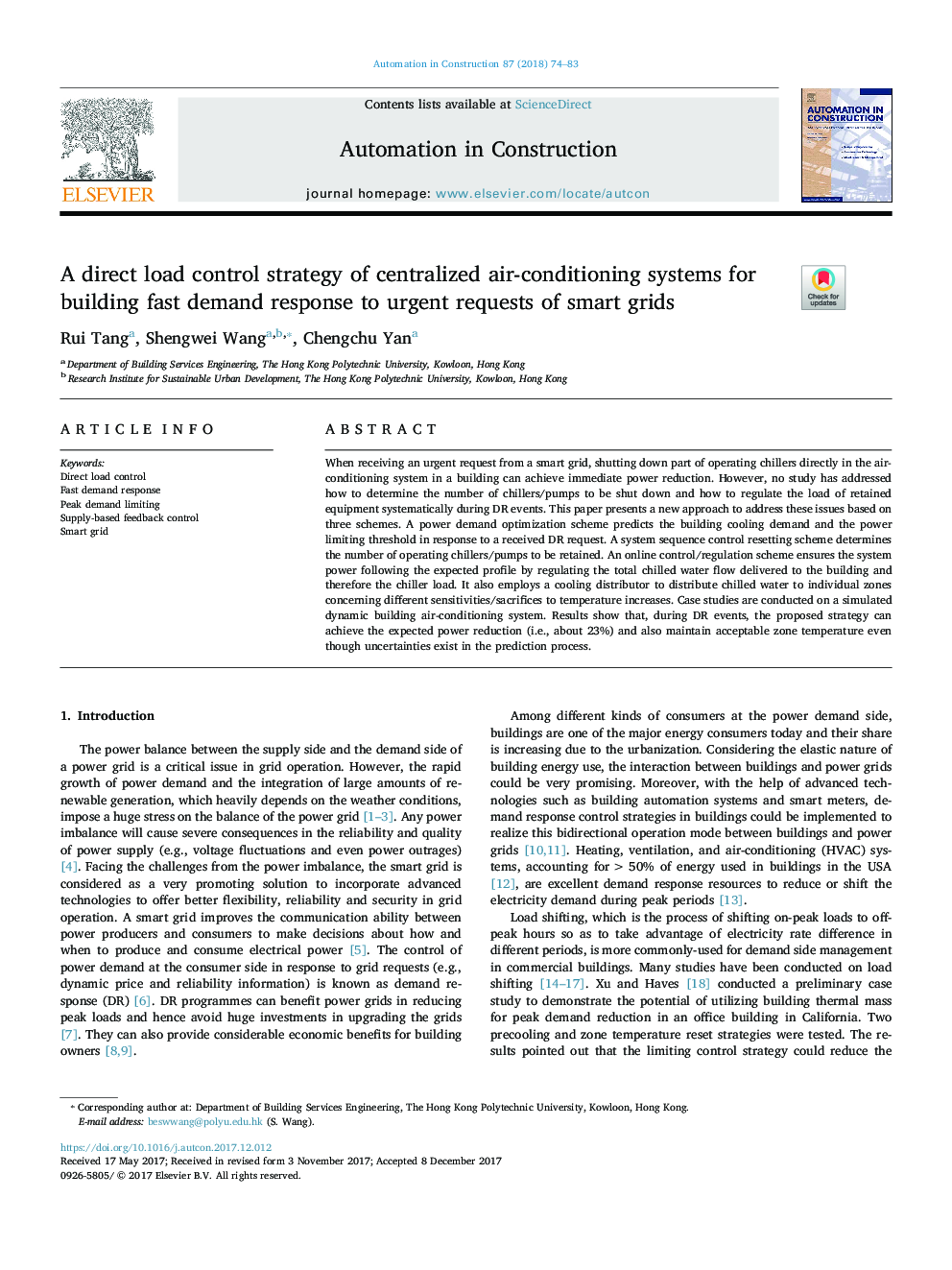| Article ID | Journal | Published Year | Pages | File Type |
|---|---|---|---|---|
| 6695849 | Automation in Construction | 2018 | 10 Pages |
Abstract
When receiving an urgent request from a smart grid, shutting down part of operating chillers directly in the air-conditioning system in a building can achieve immediate power reduction. However, no study has addressed how to determine the number of chillers/pumps to be shut down and how to regulate the load of retained equipment systematically during DR events. This paper presents a new approach to address these issues based on three schemes. A power demand optimization scheme predicts the building cooling demand and the power limiting threshold in response to a received DR request. A system sequence control resetting scheme determines the number of operating chillers/pumps to be retained. An online control/regulation scheme ensures the system power following the expected profile by regulating the total chilled water flow delivered to the building and therefore the chiller load. It also employs a cooling distributor to distribute chilled water to individual zones concerning different sensitivities/sacrifices to temperature increases. Case studies are conducted on a simulated dynamic building air-conditioning system. Results show that, during DR events, the proposed strategy can achieve the expected power reduction (i.e., about 23%) and also maintain acceptable zone temperature even though uncertainties exist in the prediction process.
Related Topics
Physical Sciences and Engineering
Engineering
Civil and Structural Engineering
Authors
Rui Tang, Shengwei Wang, Chengchu Yan,
